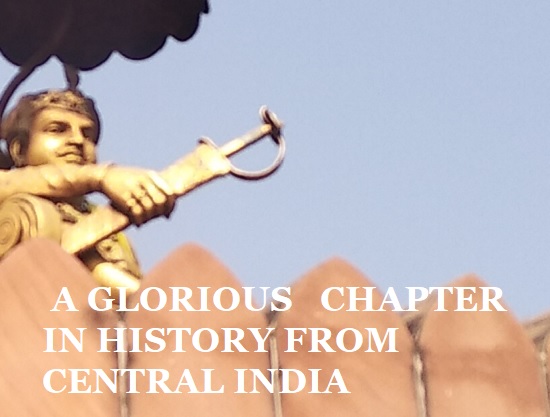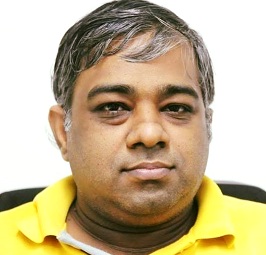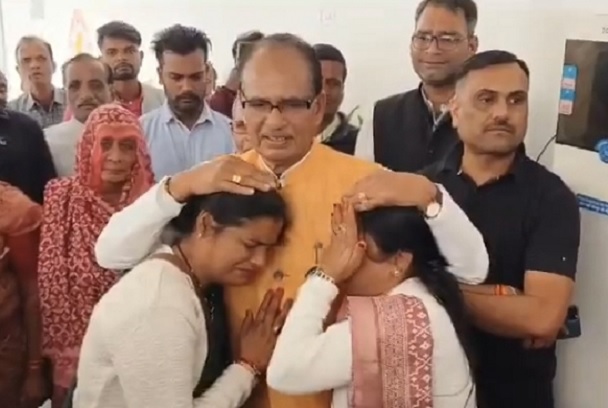Bakht Buland Shah: Ruler who founded Nagpur and whose dynasty ruled in Vidarbha, parts of Madhya Pradesh

Shams Ur Rehman Alavi
NewsBits.in
More than three hundred years ago, Bakht Buland Shah, the ruler of the Deogarh dynasty had founded Nagpur. By joining twelve different hamlets, he created and built a city.
Today, it is the biggest city in entire central India and one of the fastest growing cities in the country. But the credit of laying foundation of the city, beautifying and expanding it, goes to Bakht Buland Shah who had joined Sitabardi, Gadge, Bhankheda, Raipur, Rajapur, Sakkardara, Phutala, Haripur and several other hamlets to form the city.
The mohallas were marked, roads were laid and structures were built. The fort was constructed in Nagpur, a mosque was also built that exists even today, and it was during his reign that the population of the town grew. Under his successors, the city witnessed even more fast growth. The dynasty that earlier ruled from Deogarh which is now located in Chhindwara in Madhya Pradesh, had later made Nagpur, its seat of governance in the region.
Historical texts say that Jatba was the Gond chieftain who ruled from Deogarh (Devgad) in Emperor Akbar's era. After him, his son Koka Shah sat on the throne and he was succeeded by Bakht Buland Shah. When there was a dispute over succession, Bakht Buland Shah sought Aurangzeb's assistance and his effort paid off. His claim and authority was accepted, and he became the ruler. Bakhd Buland Shah had also spent years in the royal court at Delhi.
Shah was a Gond, who had embraced Islam. He had five sons--Chand Sultan, Mohammad Shah, Ali Shah, Yusuf Shah, Wali Shah. It was Chand Sultan who succeeded his father. During his reign the fort was strengthened and the five major gates were constructed. Also, the Juma Talab was built along with the Juma Masjid.
Besides, wells were dug and gardens came up. Unfortunately, the dynasty and its role in laying the foundation of Nagpur, gets a passing mention in texts these days. After Chand Sultan, his son Burhan Shah succeeded. Earlier, the area under Bakht Buland Shah's control included the parts of Chhindwara, Balaghat and Betul in MP, apart from Nagpur, Seoni and Bhandara in Maharashtra. However, his son Chand Sultan sensed that Mughal power was weakening and hence captured more areas and extended the territory. He captured Paunar.
But after Chand Sultan's death in 1735, trouble started. Wali Shah rebelled and removed the 'obstacle'--putting to death Bahadur Shah, who was expected to succeed. The two brothers of Bahadur Shah, Akbar and Buran were young. So their mother appealed to Raghoji Bhonsale. Soon, Raghoji arrived, defeated Wali Shah, and restored Burhan Shah to the throne. In return, she divided the kingdom in three parts, gave one part to Raghoji. As a result, Raghoji's power rose over the years.
A few years later when Akbar Shah rebelled against Burhan Shah, again Raghuji's intervention was sought. Burhan Shah now gave Akbar Shah's jagir to Raghoji. A part of revenue was to be given to Raghoji and when Burhan Shah's diwan tried to increase his sway, Raghoji had him arrested and took Burhan Shah in his protection, giving the latter a pension of Rs 3 lakh per annum.
However, even after he took over, the relationship remained of mutual respect. Raghoji would bring to notice important affairs to Burhan Shah's knowledge, discussed it and a tradition continued that successors of Raghoji would get blessings from the Shah dynasty's contemporary nominal ruler of the era. In fact, the tradition continued and the relations remained till the middle of the 20th century, when one of the descendants--Azam Shah was alive.
Author Sharfuddin Sahil, who has written multiple texts on the history and heritage of the region, mentions that Burhan Shah saw reign of four Bhonsla rulers--Raghoji, Janoji, Modhaji and Raghoji II, all of whom respected him and called him at Raja Sahab.
After Burhan Shah's death in 1896, he was buried in the royal graveyard of the Gond Muslim dynasty at Sakkardara in Nagpur. He had six sons viz. Bahram Shah, Suleman Shah, Firoz Shah, Sikandar Shah, Azam Shah and Anwar Shah. Bahram Shah succeeded his father.

Sir Richard Jenkins says that much of the credit for development of agriculture, industry and commerce in Gondwana and Nagpur goes to Bakht Buland Shah who brought industrious settlers into his domain by offering them liberal land grants. "As ruler, his biggest achievement is the foundation of Nagpur. He ensured that the city was built, divided in localities, roads constructed and a wall around it raised to protect it."
"Later, in 1706, he shifted capital from Devgad to Nagpur", mentions the gazetteer. After Burhan Shah, the Bhonsla dynasty reigned until the British completely took over. Sadly, the dynasty that played such an important role, doesn't get due attention when history of the region is mentioned.
HERITAGE AND HISTORY: CONSERVATION EFFORTS AND MORE AWARENESS NEEDED
The fort at Deogarh lies in ruins and the graveyard at Sakkardara too remains unattended--unmarked graves and the property eyed by land sharks. This Gond Muslim Shahi Qabristan was once spread over a large area and is now restricted to just over 2 acres. The reason is encroachment and lack of proper maintenance.
The kings, their descendants and family members were buried here. In fact, thieves earlier targeted the place as they felt that the ornaments may be buried with the bodies in the graves. The State government has designated it as Waqf land, however, there has been less focus on safeguarding and protecting the place.
In all, around 81 graves are located here but most of them can't be identified easily. Apart from Bakht Buland Shah, the graves of Chand Sultan, Burhan Shah, Bahram Shah, Rahman Shah, Suleman Shah, Azam Shah and their kin are located in this premises. [This article has first appeared in the print and is now being republished]










